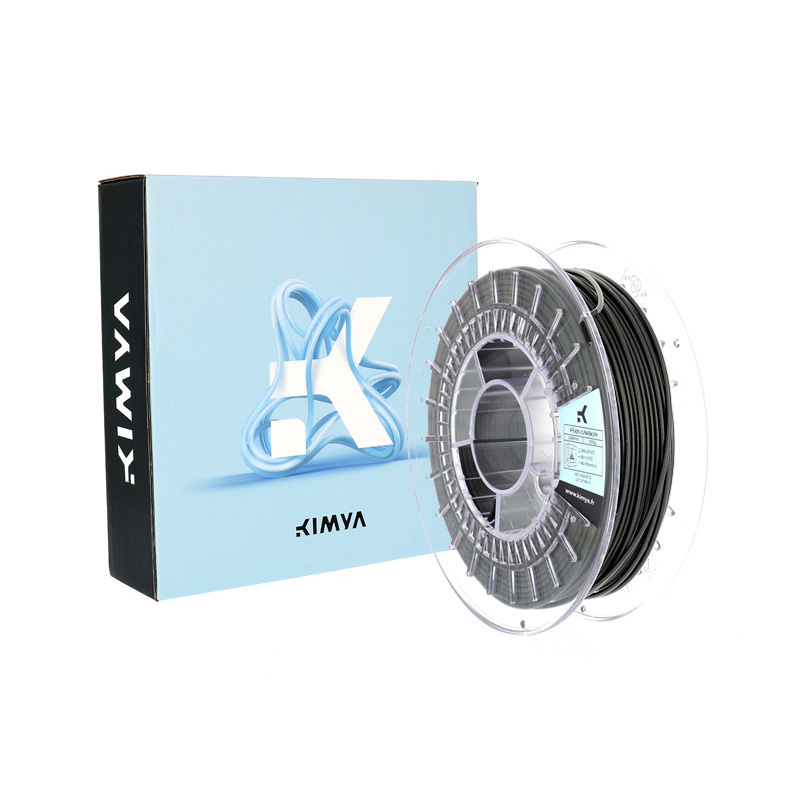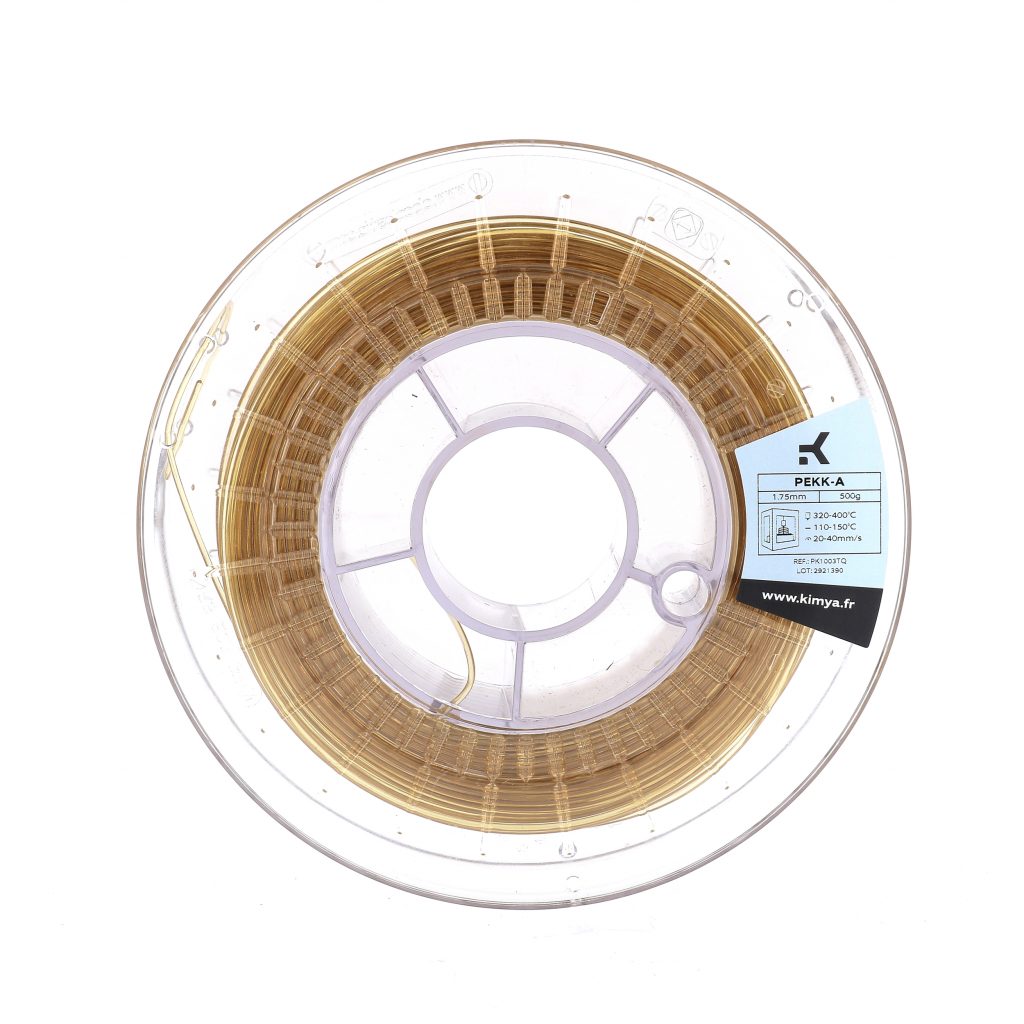Our industry is currently being entered by a number of very large polymer and metals companies. These firms see the potential of our market. Even though the volumes are comparatively small high-value applications and strong growth means that they have to have a 3D printing play. In the polymer market, we see some companies invest nig by buying materials vendors, others build capacity by starting departments centered on verticals while others invest big in high volume applications. Some go direct others only indirect. From the inside looking out I find it fascinating to see very different firms face the same business conundrum and all find a very different way to solve it.

Armor Group is a French multinational active in 20 countries with over 1900 employees and 265 million euro in revenue. From thermal transfer ribbons, inkjet cartridges and 2D print the firm is now trying to tackle 3D printing. Their approach? Armor has created a startup Kimya. Backed by Armor’s resources and R&D the small versatile startup is meant to be able to quickly engage the 3D printing market. The company has a strong focus on customized materials for very specific applications. This positioning and go to market is unique and pits the company against established small 3D printing materials firms and compounders such as Lehmann & Voss. Rather than try to push their own brands Kimya is focused on making the right material for your particular application. If the firm is versatile enough to make the right very specific materials, then their heft may drive high volume good margin applications to real profitability. They’re positioning themselves right at the frontier of the possible in industrialization. However, will louder market entrants drown out the startup or will they make the wrong choices in terms of the materials that they make? This will retard their progress. We interviewed Erik Henstra, their Business Development Manager, Nordics and Benelux to find out more about the firm and their plans (are you a new 3D printing market entrant, email joris (at) 3Dprint.com to also get interviewed).
What is the ARMOR group?
ARMOR specializes in the industrial formulation of inks and the coating of thin layers onto thin films. The Group is the global market leader in the design and manufacture of thermal transfer ribbons for printing variable traceability data on labels and flexible packaging. The European market leader in innovative and sustainable printing services and consumables, the Group is a pioneer in the development and production of industrial inks and innovative materials, such as organic solar films, coated collectors for electric batteries and bespoke filaments for additive manufacturing. With an international presence, ARMOR has nearly 1,900 employees in some 20 different countries. In 2018, it posted annual revenue of €265m. Each year the group invests nearly €30m in R&D and industrial development. ARMOR is a responsible company committed to stimulating innovation within society.
What is KIMYA?
The division ARMOR 3D developed the offering Kimya to committing to its industrial clients and printer manufacturers by offering three products & services packages:
Kimya Lab:
To formulate and produce customized materials in accordance with a set of specifications agreed with a team of chemists based at our production and R&D sites in Nantes (France).
- Specific development
- Dedicated team of chemists
- Characterisation laboratory
- Bespoke production lines
- Kimya Services:
To support professionals in their Additive Manufacturing projects. Kimya selects and works with expert partners to provide training, print services of installation and maintenance of 3D industrial printers.
- 3D print services
- Training
- Kimya Materials:
A range of high-performance, engineering and basic filaments for professionals as well as a range of eco-designed filaments, combined with a collection service for your 3D print waste (available via our distribution network).
Kimya technical filaments
Eco-designed filaments
Collection program
Why did you choose to start a startup?
To benefit from the advantages of being in a group, but also with a vision of a start-up, meaning going fast in our development to serve our customers in the best way possible.
What unique capabilities or products do you offer the market?
On-demand material and solution to help industrials and printer manufacturers print final parts with the material that suits their specific needs.
What advice would you give a company wanting to manufacture with 3D printing parts?
Take it as a global project to take into account all the aspects of a successful print process: material + printer + software + designed part.

What materials do you offer?
We offer high-performance materials that we formulate to offer specific properties to final products. Some of our materials are: PEKK-A, PEI-1010, PEI-9085 and PPSU.
What companies do you wish to partner with?
Industrial end-users willing to integrate Additive Manufacturing for their production process and production of end-use parts;
3D printer manufactures for characterization and making print profiles available;
Resellers and distributors (dedicated per region) who see added-value in our proposition towards industrial end-users and 3D printer manufacturers.

What kinds of custom materials do you make?
All kind that have specific usage and certifications.
How do you make a custom material?
Based on specifications, we formulate in house materials that we then use to produce a filament.
Then we validate the material produced by printing parts.
We make specific profiles for printers and printed parts that are adapted to our material.
What filaments are doing well now in production?
PEKK-A filament co-developed with KEPSTAN by Arkema is among those doing especially well now.
What new filaments have you brought to market?
We’ve focused on high-temperature filaments easier to use than PEEK, such as the PEKK-A Kimya. What we also do is very specific products such as railway compliant smoke fire filaments for an industrial (EN45-545 standard).
In what way are materials limiting 3D printing?
The main limitations of FDM are the Z layer adhesion, surface quality and overall quality.
Subscribe to Our Email Newsletter
Stay up-to-date on all the latest news from the 3D printing industry and receive information and offers from third party vendors.
You May Also Like
3D Printing Financials: Fathom Struggles in Financial Quicksand During Critical Transition
Facing a year of key transitions and financial pressures, Fathom (Nasdaq: FTHM) has filed its annual report for 2023 with the U.S. Securities and Exchange Commission (SEC). The document outlines...
Latest Earnings Overview for Australian 3D Printing Firms Titomic and AML3D
Australian 3D printing manufacturing firms Titomic (ASX: TTT) and AML3D (ASX: AL3) reported their financial results for the period from July to December 2023, marking the first half of their...
3D Printing Webinar and Event Roundup: April 7, 2024
Webinars and events in the 3D printing industry are picking back up this week! Sea-Air-Space is coming to Maryland, and SAE International is sponsoring a 3D Systems webinar about 3D...
3D Printing Financials: Unpacking Farsoon and BLT’s 2023 Performance
In the Chinese 3D printing industry, two companies, Farsoon (SHA: 688433) and Bright Laser Technologies, or BLT (SHA: 688333), have recently unveiled their full-year earnings for 2023. Farsoon reported increases...































